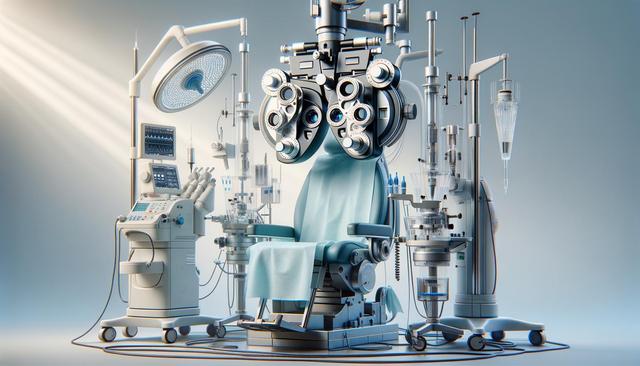Understanding Cataract Surgery: Procedure and Timeline
Cataract surgery is a widely performed procedure aimed at removing the clouded lens in the eye and replacing it with an artificial lens. It is typically recommended when cataracts begin to interfere with daily activities such as reading or driving. The procedure itself is relatively quick—usually lasting between 15 to 30 minutes per eye—and is often performed on an outpatient basis. Most patients are awake during the surgery but receive local anesthesia to numb the eye and prevent discomfort.
There are two main types of cataract surgery: traditional and laser-assisted. Traditional cataract surgery involves making a small incision in the eye manually, while laser-assisted surgery uses advanced imaging and laser technology to make more precise incisions. Both methods are effective, though laser surgery can offer enhanced accuracy in certain cases. The recovery period is generally short, with many patients resuming normal activities within a few days, although complete healing may take several weeks.
Cost of Cataract Surgery in the United States
The cost of cataract surgery in the USA can vary depending on several factors, such as the type of lens chosen, the surgical technique, and whether the procedure is performed in a hospital or outpatient clinic. On average, the cost for a standard cataract surgery without insurance ranges from $3,500 to $5,000 per eye. However, many insurance plans, including Medicare, typically cover the cost of basic cataract surgery that uses monofocal lenses.
Additional expenses may arise if patients opt for advanced intraocular lenses (IOLs) or choose laser-assisted surgery, as these are often considered elective upgrades. It’s important to discuss these options with your ophthalmologist and confirm what your insurance covers. Patients should also consider related costs such as:
- Pre-surgery consultations and eye exams
- Post-operative medications and follow-up visits
- Out-of-pocket expenses for premium lenses or laser technology
Understanding your insurance policy and asking for a detailed cost breakdown before the procedure can help avoid unexpected expenses.
Intraocular Lens (IOL) Options: Choosing What Fits You
One of the most significant decisions patients will make regarding cataract surgery is selecting the type of intraocular lens (IOL) to be implanted. The standard option is a monofocal lens, which corrects vision at one distance and is typically covered by insurance. Patients who choose this lens may still need glasses for reading or distance vision.
Other types of lenses include:
- Multifocal lenses – designed to provide clear vision at multiple distances
- Toric lenses – correct astigmatism and are tailored for patients with irregular corneal shape
- Extended depth-of-focus (EDOF) lenses – offer a broader range of vision than monofocal lenses
These premium lenses can significantly improve visual outcomes but often come with additional costs. Discussing your lifestyle needs and visual goals with your eye surgeon can help determine the most suitable lens option for you.
Laser vs. Traditional Cataract Surgery: Key Differences
While both laser and traditional cataract surgery are effective, there are notable differences that might influence a patient’s decision. Traditional surgery has been in use for decades and involves manual techniques for making incisions and breaking up the cloudy lens. Laser-assisted surgery, on the other hand, uses advanced imaging to guide a femtosecond laser in creating more precise incisions and softening the cataract for easier removal.
Advantages of laser-assisted surgery may include:
- Greater precision and consistency
- Reduced risk of complications in certain patients
- Potentially faster recovery time
However, laser cataract surgery typically incurs higher out-of-pocket costs, as it is not always covered by insurance. Patients should weigh the potential benefits against the added expense and consult with their ophthalmologist to decide which method aligns with their needs and budget.
Finding Highly Rated Cataract Surgeons Near You
Choosing a qualified and experienced cataract surgeon is crucial for achieving optimal results. Start by asking your primary eye care provider for referrals or searching for board-certified ophthalmologists in your area. Online reviews, patient testimonials, and healthcare rating platforms can also provide valuable insights into a surgeon’s reputation and quality of care.
When evaluating potential surgeons, consider the following:
- Years of experience and number of cataract surgeries performed
- Availability of advanced technologies and lens options
- Clinic facilities and support staff professionalism
- Willingness to discuss surgical techniques, risks, and expectations in detail
Scheduling a consultation allows you to ask questions, understand the procedure, and feel confident in your decision. Selecting a highly rated surgeon can contribute to a smoother surgery experience and a more comfortable recovery.
Conclusion: Making Informed Decisions About Cataract Surgery
Cataract surgery offers a safe and effective solution for restoring vision, with most patients experiencing significant improvement in their quality of life. Understanding the procedure, the differences between traditional and laser methods, and the various lens options can help you make informed choices. While insurance often covers the basic surgery, additional costs may apply depending on your selections. By researching highly rated surgeons and asking the right questions, you can take proactive steps toward a successful outcome and clearer vision.




Leave a Reply